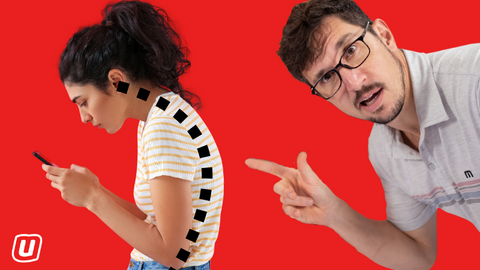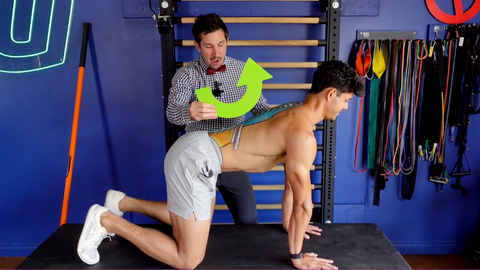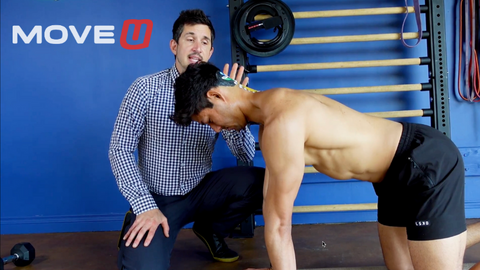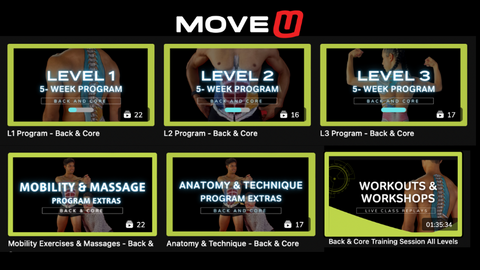
How Do You Fix Your Neck Hump?
Ever wondered about that subtle curve in your upper back or the occasional discomfort in your neck? It might be the notorious neck hump (also known as "Dowager's Hump"). In this blog, we'll unravel the reasons behind it, symptoms, and most importantly, how to say good-bye to it forever.
Understanding the Neck Hump:
A neck hump, colloquially referred to as the "hunchback look," is a kyphotic (rounded forward) upper spine. Poor posture is typically to blame, especially when the head is shifted forward in front of the body. Fortunately, it's a condition that can be addressed with active intervention and lifestyle changes.
Common Causes:
The most common culprit behind a Dowager's Hump is weak upper back and neck muscles paired with tight neck and chest muscles. Sitting for hours slumped at a desk or over a phone — hello, text neck — further solidifies this rounding of the spine.
Other possible causes include osteoporosis, fractures of the spine, Scheuermann's disease, congenital (birth) defects, and disc degeneration.
Recognizing the Symptoms:

Take a side video or photo of yourself at your desk or seated in a chair. Sit as you normally would if you weren’t on camera. Notice your head position. Is it shifted forward in front of your shoulders? Is there a visible hump or rounding of the upper back and shoulders? Even without images, experiencing pain in the upper back and neck are common indicators of a misalignment that can lead to a neck hump.
For a deeper look into your misalignments, try our totally free posture assessment tool!
Treatment Approach:

To combat a neck hump effectively, you need to train your posture through targeted muscle-strengthening exercises focusing on upper back extension and neck retraction. Our MoveU Membership gives you all inclusive access to three programs that are designed to help you do this: Back & Core, Shoulders & Arms, and Head & Neck. These work together to fight the battle of the hump! Lifestyle changes like less screen time and more time outdoors enjoying the big wide world will also have a positive effect on your overall posture and wellbeing, so get out there and LIVE!
A Helpful Spinal Stretch:
Begin your journey to correct a neck hump with this simple mobility exercise:
- Identify the protruding part at the back of your neck.
- Use a foam roller, placing it where the hump is most prominent.
- Place your hands behind your head and look up at the ceiling. Avoid pulling the head forward.
- Spend 5-10 minutes there and relax. Breathe into it and try to get a bit more extension in your spine each time you exhale. You can move the roller an inch above or below the hump to target different parts of the spine.
However, remember that passive therapies alone will not bring lasting change. For a long-term holistic approach, delve into the MoveU Programs which offer strength exercises for proper scapula positioning, spinal extension, and head retraction.
Effective Exercises:

Explore these three exercises designed to combat a neck hump:
QUADRUPED RETRACTIONS
- Set up on all fours on your hands and knees and set your shoulder blades into position by pushing your shoulder blade down and your spine to the sky.
- Look at the ground and push your face to the ground as much as you can, thus creating that turtle-looking posture.
- Once you reach your end range, go ahead and do the exact opposite by pushing your head directly back towards the sky and then hold that retraction.
- Continue going back and forth, back and forth, strengthening your neck flexors and improving your endurance all the while maintaining a good shoulder and head position.
SHOULDER BLADE SQUEEZE
- Standing or seated in a firm chair, set your shoulders in proper alignment by drawing them down toward your back pockets.
- Pull your shoulder blades back and imagine squeezing a pencil in between them. Hold for 2-3 seconds.
- Repeat 10 times.
NECK FLEXION, EXTENSION, TILTS & ROTATION
Use it or lose it! Range of motion can decrease when we don’t explore it to the fullest. You can do this by practicing neck flexion (lowering your chin to your chest) and extension (tipping head back to look at the sky), head tilting (lowering your ear towards your shoulder), and rotation (turning your head from right to left). Go through all of these motions slowly and with control, remembering to breathe as you move toward each range within your comfort zone.
Enhance your efforts with tools like the Iron Neck 3.0 Pro, which focuses on reducing neck pain, improves posture, and strengthens neck muscles.
Conclusion:

Bid farewell to the discomfort of a neck hump by taking a proactive approach. Join the MoveU Membership today to get started on improving your body one area at a time. Your back and neck muscles will thank you for creating postural awareness and changes in your body that will last a lifetime.
